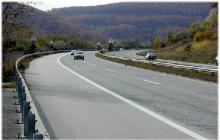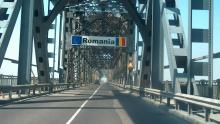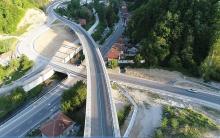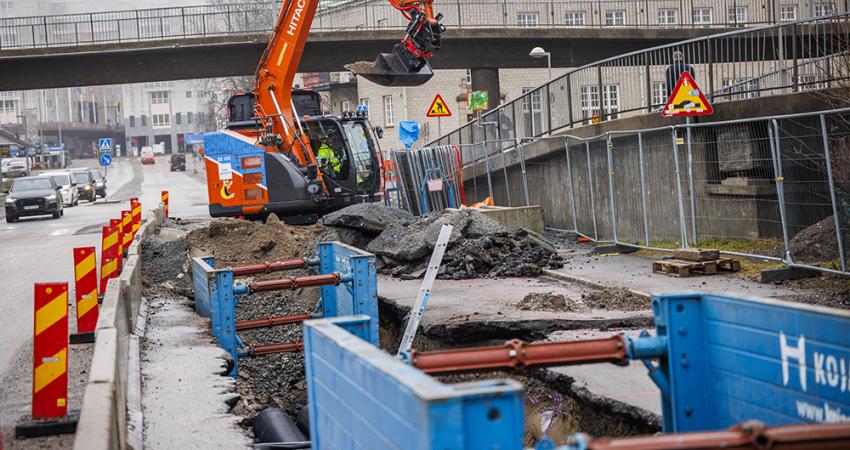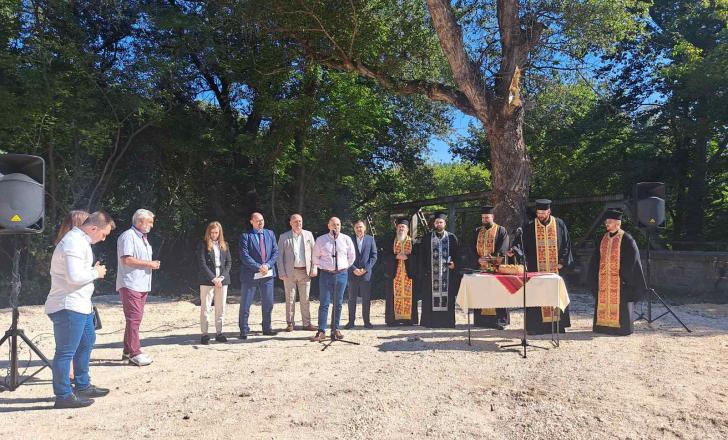
Bulgaria's Road Infrastructure Agency (RIA) has broken ground for a two-lane €8.6 million bridge to be built over the Maritsa River.
The contract was awarded to local company GBS-Infrastructure Construction, a subsidiary of civil engineering group Glavbolgarstroy, the agency said in a press release. Local company T7 Consult has won the construction supervision contract and Consortium Beta Cyclop will be in charge of technical design supervision.
The 228m-long bridge will cross the river as part of the secondary road connecting the village of Plodovitovo to the larger town of Assenovgrad, both east of the city of Plovdiv. It will establish a direct link between the Trakia motorway and the first-class road I-8 Plovdiv – Haskovo highway. The Trakia motorway, or Thrace motorway, designated A1, connects the capital city of Sofia, the city of Plovdiv and the city of Burgas on the Black Sea coast.
The new bridge will have a width of 10.5m allowing for two 3.5m-wide vehicle lanes and two 1.75m-wide pedestrian and cycle ways. On-site construction work will take around one year.
The existing single-lane bridge is near the town of Parvomai was built more than 90 years ago and vehicles only up to five tonnes are allowed to cross.
Yasen Yordanov, chairman of Bulgaria’s Road Infrastructure Agency, noted that the new bridge will adopt an orthotropic structure, combining steel with reinforced concrete - a novel construction method for Bulgaria. "What's noteworthy here is the fusion of reinforced concrete and metal in the construction. With a total span of 228m, this bridge will facilitate two-way traffic through this highly congested stretch."
An orthotropic bridge or orthotropic deck typically consists of a structural steel deck plate stiffened either longitudinally with ribs or transversely, or in both directions. This allows the fabricated deck both to directly bear vehicular loads and to contribute to the bridge structure's overall load-bearing behaviour.
Orthotropic decks permit a very shallow deck depth which reduces the steepness of approach gradients and hence their costs. The form is also widely used on bascule and other moveable bridges where significant savings in the cost of the mechanical elements can be made where a lighter deck is used.
Nikolay Mitkov, mayor of Parvomai Municipality, called the ceremony an “historic occasion” that has been eagerly anticipated. “The bridge constructed by our forebears 95 years ago has visibly deteriorated and become outdated. We're commencing the construction of a modern two-lane bridge, a crucial conduit for the smooth flow of vehicular traffic.”
Earlier this month, the Road Infrastructure Agency launched seven public tenders worth an estimated €434.3 million in total for 18-month contracts for repairs and maintenance of the country's road network.
The 480km-long Maritsa or Maritza River has its source in western Bulgaria, flowing east and then south whereupon leaving Bulgaria it becomes the border between Greece and Turkey - called the Meriç in Turkish and Evros in Greek. It is one of the largest rivers in Europe by discharge and empties into the Aegean Sea.

